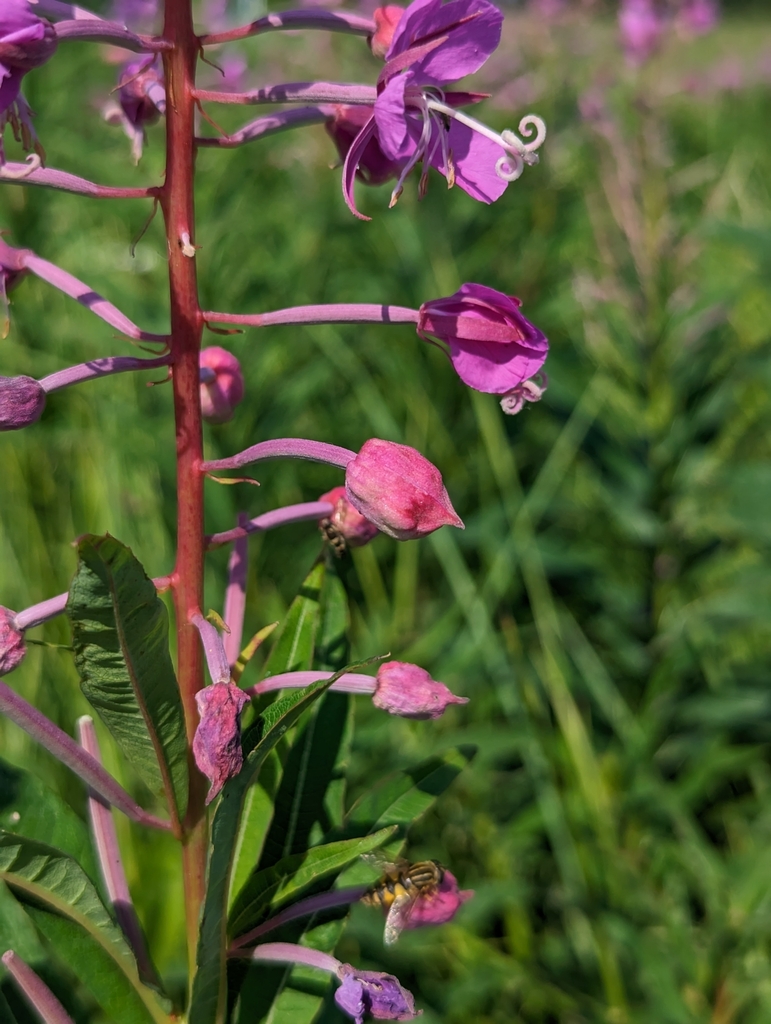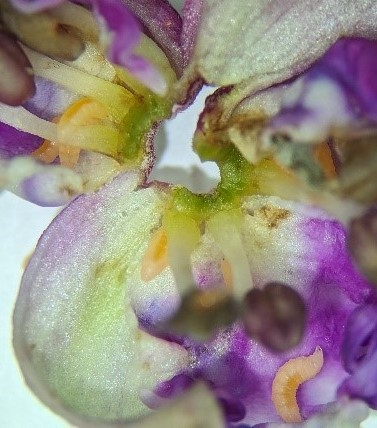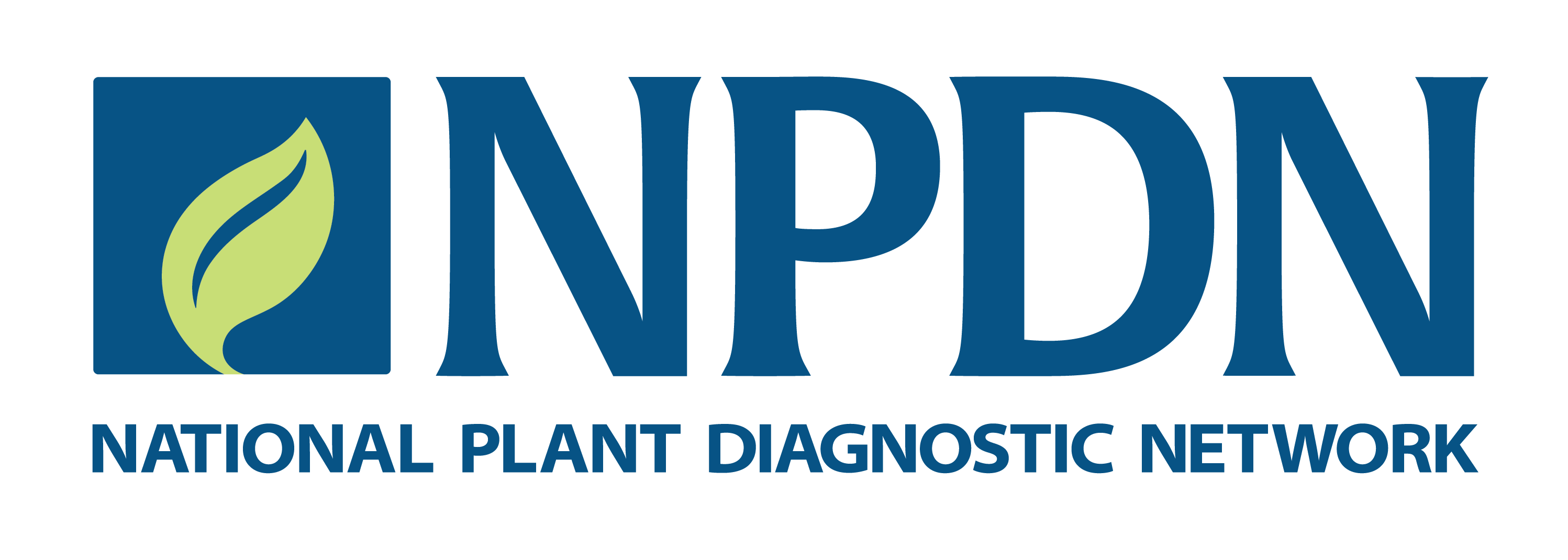Alexandria 'Alex' Wenninger University of Alaska Fairbanks - Institute of Agriculture, Natural Resources, and Extension - Integrated Pest Management Program (WPDN)
The Communicator: Volume 6, Issue 5, May 2025
Fireweed (Chamaenerion angustifolium) is a well-loved native perennial in Alaska with many traditional uses; the young shoots can be harvested to consume as greens or sautéed like asparagus, the leaves can be steeped into a light, sweet tea, and the flower petals can be used to add floral notes to jellies and syrups. In late summer 2023 swollen flower buds containing small, orange larvae on fireweed (C. angustifolium) and dwarf fireweed (C. latifolium) were noticed by diagnosticians at the University of Alaska Fairbanks Integrated Pest Management Program (AK IPM) (Figures 1 & 2).


Evidence of prior records of this insect were lacking so AK IPM quickly began working to collect and rear specimens for identification. With help from collaborators at the National Museum of Natural History and USDA APHIS Plant Protection and Quarantine’s National Identification Services, genetic and morphological examination of specimens confirmed the identity of the causal organism to be the fireweed flower gall midge (Dasineura epilobii (Löw)), a species previously only formally known from Europe. This discovery precipitated a redescription of the species which is now recognized as Holarctic in distribution (Gagné et al., 2024). Gall-forming organisms and their ecological interactions have long been understudied which likely contributed to this species’ evasion of the scientific record in North America for so long.
Additionally, AK IPM engaged the public in an effort to help map the distribution of the fireweed flower gall midge in Alaska. Community scientists not only captured 5.5 times as many observations of the fireweed flower galls as AK IPM but also captured data from a third of Alaska boroughs and census areas, an impressive representation given Alaska’s large size and limited road access. This work clearly demonstrates one of the ways that community collaboration can enhance scientific knowledge.
The redescription of the fireweed flower gall midge can be found in: Gagné, R.J., J. W, Kim, A. Wenninger, and J. L. Mottern. 2024. Redescription of Dasineura epilobii (Löw), a Holarctic Gall Midge (Diptera: Cecidomyiidae). Proceedings of the Entomological Society of Washington 126(3): 292-299. DOI: https://doi.org/10.4289/0013-8797.126.3.292
You can read the full story about the fireweed flower gall midge community science project in the Newsletter of the Alaska Entomological Society:
Web version: https://www.akentsoc.org/doc/AKES_newsletter_2025_n1_a05.html
PDF version: https://www.akentsoc.org/doc/AKES_newsletter_2025_n1_a05.pdf
Funds from the WPDN allowed us to purchase equipment which has increased our DNA-extraction capabilities, facilitating our ability to make DNA-based identifications. This improved capacity helped us make the initial DNA characterizations of the fireweed flower gall midge to corroborate the morphology-based identification. This work was also partially funded by the Crop Protection and Pest Management Program (grant no. 2021-70006-35561 & 2024-70006-43668) from the USDA National Institute of Food and Agriculture.

